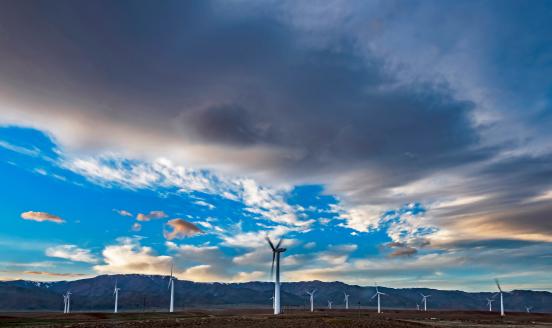COP21: An important turn on a long journey
The Paris Agreement has been hailed as a turning point and a huge success in the international fight against climate change. Its big achievement is th
1. From protocol to architecture
The Paris Agreement acknowledges the impossibility of agreeing on a meaningful international protocol for the very complex and costly climate issue. Several important countries (including the US Senate and likely also China and India) would not have signed a treaty that sets out binding emission targets for their economies.
The Paris Agreement instead develops a flexible architecture which strikes a new balance between national sovereignty and international commitments. Its purpose is primarily to build trust between the parties, by turning climate negotiations from a one shot-negotiation into a repeated game. If developed countries see that developing countries are unambitious in keeping emissions low, they might not be willing to make good on their commitments on climate finance. And if developed countries do not come up with sensible mechanisms on ‘loss and damage’ or ‘technology transfer’, some developing countries might not deliver on their national contributions.
2. From top-down to bottom-up
It proved impossible to share an emissions budget between all parties, as this would lead to a zero-sum game among 195 countries. The new approach to converge over time to meaningful mitigation measures looks much more realistic. And at least in political terms it has resolved the post-Kyoto deadlock.
3. From developed countries to all parties
When the Kyoto protocol was agreed, more than half of global emissions were produced by developed countries. Now about two thirds of global emissions are produced by the rest of the world. So a crucial breakthrough of the Paris Agreement is that all parties now have to contribute to mitigation. In addition, non-industrialized countries are invited, but not obliged to provide financial transfers (such as climate finance, loss and damage compensation, capacity building).
4. From stagnation to a new momentum
One success of the Paris Agreement is that it reignites momentum in fight against climate change. Several countries, including Canada and Japan, have turned their back on the Kyoto protocol, and economic elites in the EU and elsewhere were worried that other countries would never join the expensive fight against climate change. This has changed with the Paris Agreement. The true break-through of 2015 is that each party learned that all the others were also committed to mitigating emissions. This makes it politically much easier to conduct efficient national climate policies (emission trading).
But it is also clear that the Paris Agreement alone will be insufficient to combat climate change. The architecture is there, but now the house has to be built accordingly. It will require continued effort by all parties to achieve the targets of the agreement.
There are three areas to work on:
- The Paris Agreement includes a lot of loose ends in terms of referring to future decisions. For example, an Ad Hoc Working Group on the Paris Agreement will have to develop further guidance on what exactly the nationally determined contributions (NDCs) will look like – which is crucial for making national ambitions comparable. If no strong agreement can be found on those important details, the Paris Agreement will evaporate.
- Mitigating greenhouse gas emissions will remain costly for the foreseeable future. So each country individually will be better off if it is less strict on its own emissions. The same holds for costly commitments on climate finance or ‘loss and damage’ compensation. Any attempt to cheat or openly deviate from the already committed contributions needs to be implicitly penalised by the international community, for example in terms of losing credibility in other international negotiations. This means that if countries turn a blind eye to offenders, the Paris agreement will quickly become meaningless.
- The Paris Agreement builds on the idea that every five years all governments will have to ramp up their ambitions. This will be increasingly expensive, as reaching the 2°C (let alone the 1.5°C) target is still far off. There is a risk that at some point in the future the pressure to make progress decreases, and thereby the entire agreement gets lost.
Without continued full-hearted support from the highest political level in key-countries, the whole agreement could still fall apart. But the above described risks are not open-ended (and hence certain). Low-carbon technologies are becoming cheaper. When producing the remaining fossil fuels is more expensive than relying on non-fossil fuels, the climate-game will be ultimately won.
In this way, the Paris Agreement brings preventing uncontrollable climate change back into the sphere of the politically possible.
We present below the crucial parts of the Paris agreement, with special regard to the level of commitment (shall/should) and which parties it commits (all/developed/developing countries). What appear to us the three most important areas are underlined. This summary is obviously highly subjective.
Article 4 - Mitigation
- Each Party shall prepare nationally determined contributions (NDC) in terms of mitigation and financial transfers
- All Party’s NDCs will be reviewed every 5 years
- Each Party’s successive NDC will represent a progression beyond the Party’s then current NDC and reflect its highest possible ambition
- Developed country Parties should continue taking the lead by undertaking economy-wide absolute emission reduction targets.
Article 5 – Sinks
Article 6 – Emission Trading
- international transfer of mitigation outcomes to achieve NDCs shall be voluntary
Article 7 – Adaptation
- Highlights the importance of adaptation, calls for cooperation, and requests (shall) each party to engage in adaptation
Article 8 - Loss and damage
- Refers to Warsaw Mechanism, no strong commitments
Article 9 – Climate finance
- Developed countries shall meet existing obligations.
- Developed countries should take the lead in scaling up and climate finance should be additional.
- Developed countries shall report on the provided climate finance every two years.
- Green climate fund not mentioned in agreement
Article 10 - Technology transfer
- Refer to Technology Mechanism, no strong commitments
- Support, including financial support, shall be provided to developing country Parties for technology transfer
Article 11/12 - Capacity building
- Developed country Parties should enhance support for capacity-building actions in developing country Parties.
Article 13 – Transparency
- Each Party shall regularly provide the following information: emission statistics and report on implementation of NDCs
- Developed country Parties shall, and other Parties that provide support should, provide information on financial, technology transfer and capacity-building support
- The above information submitted by each Party shall undergo a technical expert review which shall also assess the consistency with harmonized guidelines that shall be developed
Article 14 – Global Stocktake
- The Parties shall undertake its first global stocktake in 2023 and every five years thereafter
Article 15 - Compliance Mechanism
- An expert-based committee shall provide annual reports.



